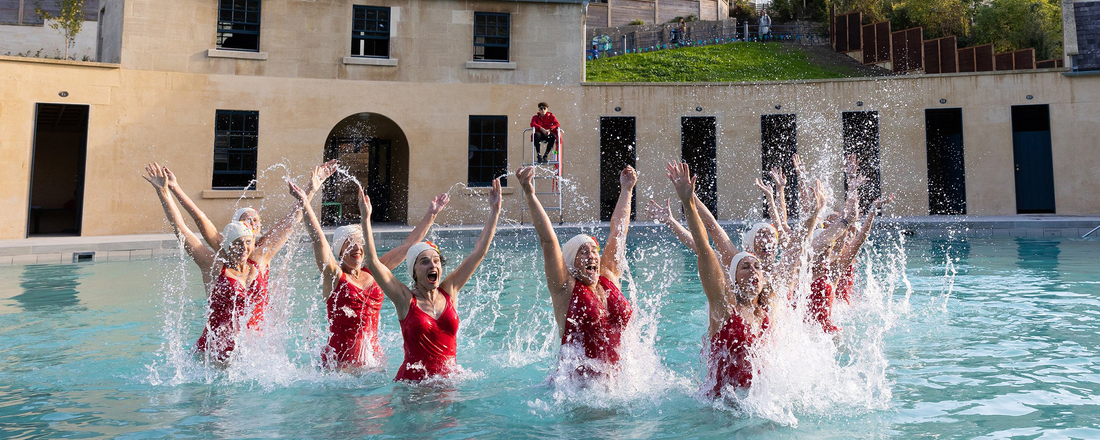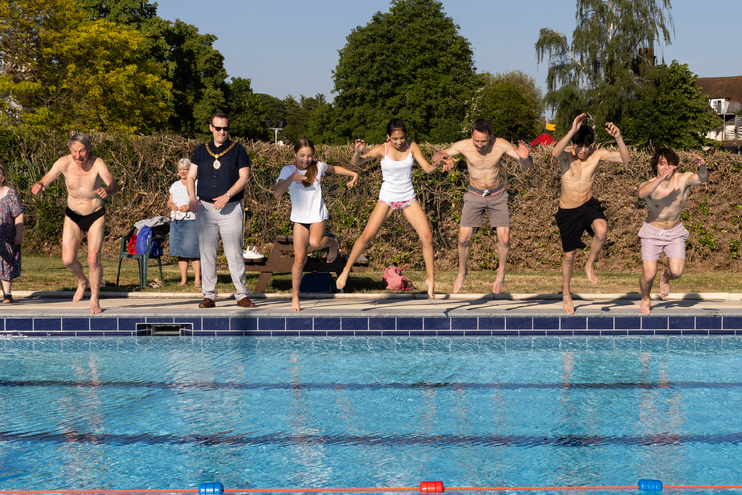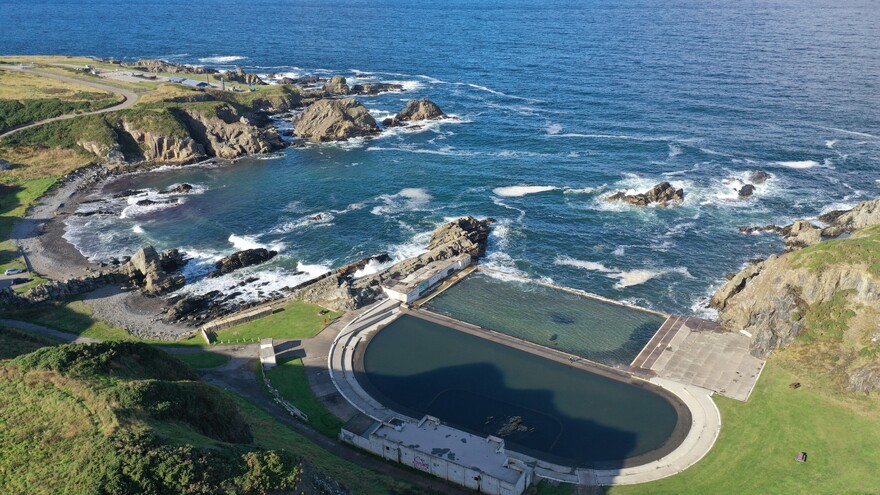Get updates from The Developer straight to your inbox Yes, please!
Pooling resources: The resurgence of the lido
Once an essential part of the social fabric, despite a lack of council backing, many lidos are being restored and run by community groups, writes Harriet Saddington

Is a public lido a community luxury or an essential part of our urban fabric? In the lido heyday of the 1930s they certainly thought the latter. At its peak the UK boasted 300 active lidos.
Outdoor swimming was not a new phenomenon but this post-war embrace coincided with intense public investment, new-found freedom, and architectural flair. The ambition was for London to be “a city of lidos” with everyone in walking distance of one. By the end of the 1930s, the capital had 68. Lidos were classless and joyful. But they were almost entirely reliant on council funding and operation. So when the subsidisation tap got turned off in the 1960s in favour of a mandate for indoor pools, these once-thriving community hubs fell into disrepair, were filled in or simply demolished.
A century on, 2023 was ambitiously hailed the “year of the lido”. There are now 134 active UK lidos with at least three (re)opening their doors last year and many investing in redevelopment or announcing new projects. Meanwhile Penzance’s Jubilee Pool won the 2023 MacEwen award, celebrating architecture for the common good. But is this just nostalgia for a lido renaissance? Can outdoor pools like this prove long-lasting, appropriate in a climate emergency and inclusively serve communities in the 21st century?
The Future Lidos Toolkit, launched in February, answers these questions head on. Made possible by a £100,000 grant from the National Lottery Heritage Fund, it is as appealing to avid lido enthusiasts as sceptics craving data, and full of evidence that the benefits of a lido project can outweigh the complexities.
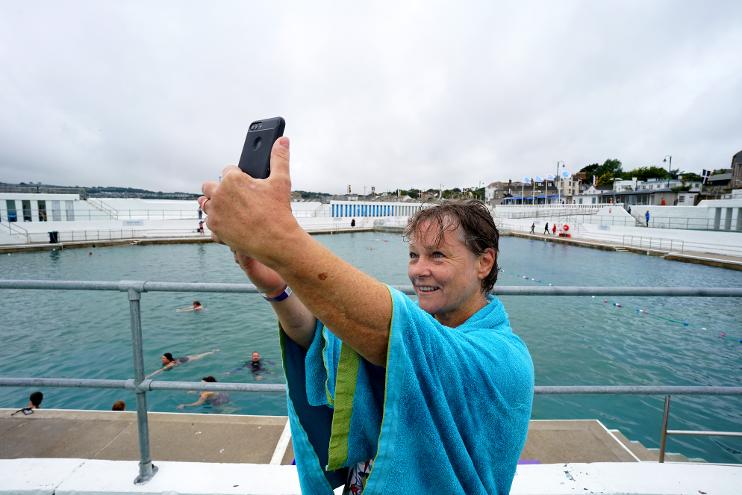
Future Lidos is an informal network of projects across the UK and Ireland and its free-to-access toolkit provides assistance to future lidos needing help on how to start, operating lidos wanting advice on how to thrive, and at-risk lidos desperate for a turnaround roadmap. A common paradox for at-risk lidos is that when councils struggle to prop them up, passionate community groups step in to save them – so providing an opportunity for councils to wash their hands of them.
In the 1930s, lidos were almost entirely council-owned and operated – the exceptions being those funded by mining unions or companies, such as one at Port Sunlight for factory workers, closed in 1970. Today most lidos still have the council as the site’s freehold owner but the leaseholder and operator is a lido organisation, commonly a community interest company (CIC) or community benefit society (CBS). These organisations range from 100 per cent community volunteer-led (paying only the lifeguards) to 100 per cent leisure operated (like Better Health at London Fields Lido).
The success of the transfer from council to community ownership varies. As Future Lidos director Deborah Aydon says: “When it’s done well, it’s through funding and planned transition. When not thoughtfully done, it can be a liability transfer rather than an asset transfer which puts enormous pressure on charities and community groups to skill up rapidly and undertake fundraising. And the management of pools is complex.”
Adding further strain, applications for leisure facility funding from Sports England must be submitted by a local authority. Therefore, independent community organisations are still forced to go via their council for funding, even though those councils are also directly competing to keep their other leisure facilities afloat.
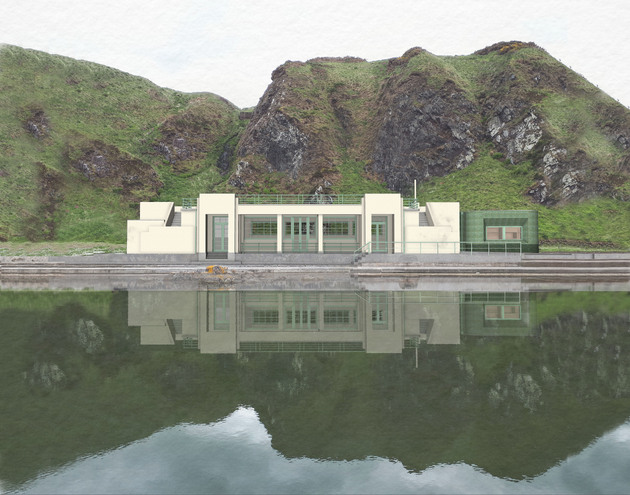
The physical and mental health benefits of access to water (termed “blue space”) are increasingly appreciated and the popularity of outdoor swimming has grown exponentially since the pandemic. A recent study revealed that the health benefits of green spaces are not shared equally; the same scrutiny must therefore be applied to blue spaces. Anecdotally there is evidence that lidos can be more accessible and approachable than leisure centres.
The latter can bring negative connotations of sport and skills or memories of school.
The evidence for this is something that Aydon says the next phase of Future Lidos Pooling Resources would look to explore. “There’s a good evidence base for the social and economic benefits of swimming generally,” she says. “We’d like to focus specifically on lidos, which we believe are uniquely able to generate value through their powerful sense of community, openness and generosity, and a deep sense of place.”
Location is everything for inclusivity. Future Lidos steering group member and architect Chris Romer-Lee believes that pools are essential, not a public luxury, and should be part of the infrastructure of our towns and cities. “A lot, if not all, lidos were built adjacent to or in a public park,” he points out, “intentionally placed in the centre of that community, ensuring access for all and strengthening those communities.”
The multiple functions surrounding the pool are key, whether that’s splash-pads for kids (Northcroft lido in Newbury, which reopened in 2023) or café and event space. At Sea Lanes in Brighton, a meanwhile scheme brought footfall before the pool opened. At Tarlair on a remote Scottish coast in Aberdeenshire, architect Studio Octopi is restoring the art deco café ahead of the pool phase.
The story of the Peckham Lido in south-east London is a dismal contrast.... Studio Octopi led the feasibility study, which proved the pool could turn a profit, but the project has stalled, with silence from Southwark since 2018
In Ware, Hertfordshire, the council’s wedding planner, Kat Harter, became the lido manager during Covid (weddings were off but outdoor swimming was allowed). She brought a unique entrepreneurial spirit to the operation of the pool, which in 2019 was in debt and on the brink of closure. A rare case of a lido run and owned by the council, on the strength of 95 per cent support following a wide community consultation, it was able to borrow to fund its £1 million renovation. This included air-source heat pumps and making the pool one-third shallower, which dramatically reduced bills (less water to heat and pump). The pool is now open all year round, with no heating in the winter months. The cold-water swimmers don’t want the heating back on for fear of attracting the chaos of fair-water swimmers!
Describing the atmosphere of the post-winter-swim cup of tea, Harter says: “We need to harness the energy of this group. Everyone gets out and feels revived, all in a mentally good place. It’s an avenue of the lido community we never had in the summer.”
Despite no grand building, Ware lido is hosting multiple initiatives: tackling loneliness, drowning-prevention week, its 90th birthday in June, a dog swim, a Christmas day swim, cinema night (watching Jaws in a rubber ring!). Harter shares the experiences through Future Lidos and encourages others to stay open during the winter months. Funding is often not available if you’re only open May to September.
In the early 20th century lido golden age, it was a badge of honour for a council to not only have a lido but make it architecturally striking. This competitive spirit was productive. Praise is due to those councils that are recognising the benefit today – most recently Ealing, Redbridge, Hull (reopened in 2023 after 30 years), Plymouth and Portsmouth.
The story of the Peckham Lido in south-east London is a dismal contrast. The pool had been grassed over in the 1980s but Southwark Council financially contributed to the enthusiastic “splashmob” campaign to resurrect it with nearly £64,000 raised in 68 days. Studio Octopi led the feasibility study, which proved the pool could turn a profit, but the project has stalled, with silence from Southwark since 2018.
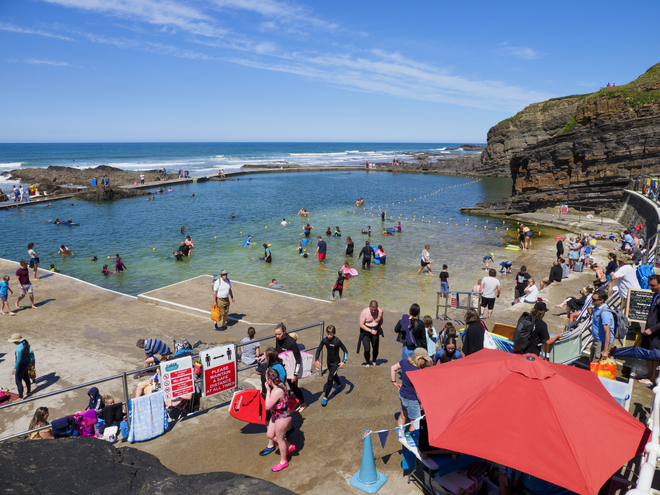
The flipside of enthusiastic communities is stretched council budgets and a wave of indoor leisure centres closing as energy and maintenance costs soar. The climate crisis makes it hard to justify heating open-air pools when hot water just evaporates. The challenges are exacerbated by the design of existing lido buildings, often reminiscent of ocean-liners with their curved concrete structures, sun decks and diving boards. They frequently have only single glazing and lack insulation while heritage listings can prevent alterations or installation of PV panels, posing significant hurdles to modernisation and energy efficiency efforts. But up and down the country, lidos are coming up with solutions and these are captured in the Future Lidos Toolkit.
“The pool has created a space for a town that feels luxurious. It has engendered a sense of place to Penzance and given confidence to the town.”
The Jubilee Pool in Penzance is the UK’s second geothermally heated pool, after the first by the Romans in Bath (perhaps 70AD). It was a massive endeavour, costing £1.8 million and including accessing the geothermal well at a depth of 410m. Nearly £540,000 of the funding came from a public share offer. There are now 1,400 shareholders of which 970 are locals. The project has brought investment and visitors to Penzance, the neighbourhood with the second highest deprivation levels in Cornwall.
Architect Alex Scott-Whitby, whose practice carried out the restoration, says: “The pool has created a space for a town that feels luxurious. It has engendered a sense of place to Penzance and given confidence to the town.”
The community benefit society has forged a range of “social prescribing” partnerships, helping health conditions such as dementia, type-two diabetes and obesity, and building musculoskeletal health as well as subsidising tickets for children. Describing the decade-long endeavour, Scott-Whitby says: “The council would never have been able to do this. It requires courageous members of the community.” However, despite best intentions to stay open all-year round, rising costs have kept the pool closed for the winter.
Geothermal heating is not possible everywhere and comes with a hefty price tag. Other alternative energy models include river-source heat pump (Cleveland Pools), air-source heat pump (Ware) solar panels (London Fields) and hydro turbines (Thames Lido). Another method is to use waste energy from data centres. It seems a no-brainer; they have to get rid of their heat and the pools need the heat. The technique is being trialled to heat an indoor pool in Exmouth, and renewable energy supplier Octopus has just pledged £200 million to roll this out in 150 locations, although no outdoor pools have been confirmed for this.
Brighton’s Sea Lanes, which opened last year, is another new model: a freshwater pool on the beach. On a site with no lido backstory, somewhere between indoor and outdoor temperatures (heated to 19°C all year round), it is a training rather than leisure pool, calling itself the National Open Water Swimming Centre. The developers took a fabric-first approach with a shallower pool, thermal cover, additional insulation to sides and bottom and a Perspex fence surrounding it against the wind. Unable to use solar power (the PV array would have taken up 5,200 sq m of the beach), or ground-source (due to storm drains), the pool is heated by natural gas but is hydrogen-ready. Data is being intensely monitored to measure the impact of wind, rainfall and solar irradiation on temperature levels in the pool and energy-use.
Swimming is said to save the NHS £357 million a year through its positive effect on physical and mental conditions, and generate more than £2.4 billion of social value each year.
Tidal sea pools are included in the Future Lidos network, including La Vallette in Guernsey, shortlisted for a 2023 RIBA Award. And for those without access to the sea but looking for a natural swim model, there is Lewisham’s investment in Beckenham Place Park. Here, a former golf course has been repurposed into a public park featuring an artificial freshwater swimming lake. The initiative aims to reconnect communities with nature, providing opportunities for outdoor recreation and environmental appreciation without the need for water-heating or changing rooms.
Since 2021, over 30 future lido schemes have emerged, nurtured by the Future Lidos Toolkit. They include East London Waterworks with a campaign to transform the Thames Water Depot (currently under threat of development by others).
Romer-Lee says: “Lidos are considerably cheaper to build than leisure centres and our objective is (and the toolkit will begin to show) that they are cheaper to run as well if you get it right.” Getting it right clearly means being in the centre of communities and programming a multiplicity of activities and audiences.
Swimming is said to save the NHS £357 million a year through its positive effect on physical and mental conditions, and generate more than £2.4 billion of social value each year. But we need to dive deeper to evidence the benefit that a new wave of lidos can bring. What the last century has taught us is that there isn’t a one-size-fits-all model and that – regardless of architectural flair – lidos need commercial strength to survive without council support. They need to be specific to the community they serve and be far more than a pavilion and a pool. Passionate local communities recognise this and the Future Lido Toolkit supports it. Now we need the investment to catch up.
Harriet Saddington is a writer and architect with a background degree in architectural history who works with architecture practices and developers with a focus on social impact
If you love what we do, support us
Ask your organisation to become a member, buy tickets to our events or support us on Patreon
Sign up to our newsletter
Get updates from The Developer straight to your inbox
Thanks to our organisation members
Become a member
© Festival of Place - Tweak Ltd., 124 City Road, London, EC1V 2NX. Tel: 020 3326 7238
